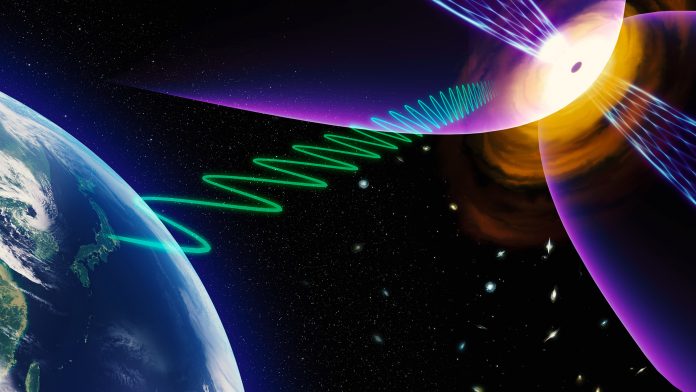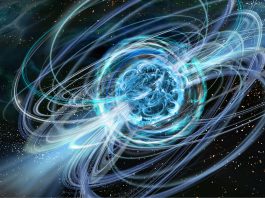An international team of astronomers has uncovered valuable clues about how rapidly growing black holes form, grow, and possibly evolve into more powerful quasars.
To uncover the truth about growing black holes, the team used the state-of-the-art capability of VERA, a Japanese network of radio telescopes operated by NAOJ.
It is now widely accepted among astronomers that nearly every active galaxy harbours a supermassive black hole at its core, with masses ranging from millions to billions of times that of the Sun.
However, the growth history by which these black holes have gained such huge masses remains an open question.
The research, ‘Probing the Heart of Active Narrow-line Seyfert 1 Galaxies with VERA Wideband Polarimetry,’ was detailed in a paper in The Astrophysical Journal.
Analysing the evolutionary stage of growing black holes
For the study, the team focused on a distinct category of active galaxies, known as Narrow-line Seyfert 1 (NLS1) galaxies.
They are suspected to contain relatively small but rapidly growing black holes, which offers a potential opportunity to study the evolutionary stage of these cosmic phenomena.
In their paper, the team stated: “NSL1 galaxies exhibit strong X-ray variability with substantial excess in soft X-rays and relatively high luminosity.

“These characteristics suggest that these galaxies have smaller masses of the central black hole and higher accretion rates than those of other classes of AGNs such as quasars, BL Lacertae objects (BLOs), and radio galaxies.
“This renders NSL1 galaxies a unique laboratory to study the physics of rapidly evolving supermassive black holes.”
To gain a deeper understanding of the immediate surroundings of these peculiar growing black holes, the team observed the cores of six nearby active NLS1 galaxies. To do so, they used VERA, a radio telescope network with an eyesight over 100,000 times more powerful than the human eye.
The team leveraged VERA’s ultra-wideband recording capability, which enable them to detect faint, polarised radio waves coming from the core of these galaxies with unprecedented precision.
The role of polarisation in studying galaxy evolution
A portion of radio waves surrounding these growing black holes is known to exhibit polarisation.
As the polarised emission penetrates the magnetised gas surrounding the black hole, the plane of polarisation gradually rotates, causing an effect known as Faraday rotation.
The extent of this rotation effect at a given wavelength is proportional to the gas density and the strength of the magnetic field within the propagating medium.
Therefore, polarisation and Faraday rotation provide valuable insights into the immediate environment surrounding a central black hole.
Combined with the sharpest view to date of the galaxy cores, the new data have unveiled significantly greater Faraday rotation compared to measurements obtained towards older, more-massive, well-developed black holes.
This indicates the presence of abundant gas in the nuclear regions of these galaxies, facilitating the rapid growth of the growing black holes.
Mieko Takamura, lead author of the study, concluded: “Supermassive black holes undergo a growth process similar to that of humans.
“The black holes we observed have characteristics comparable to a food enthusiast, akin to young children who have a strong craving for rice.”









